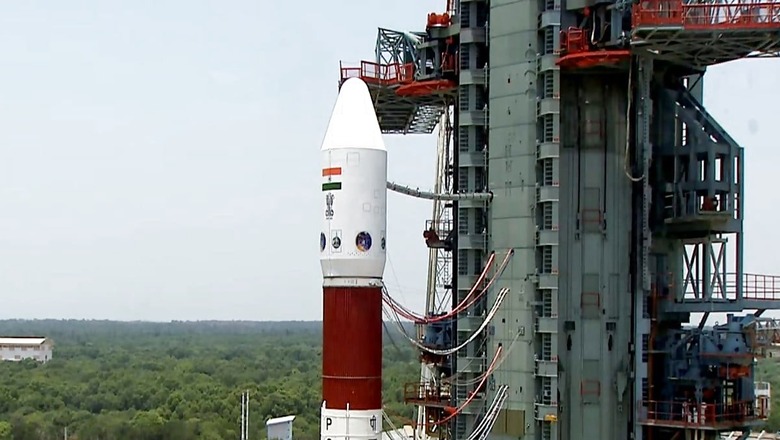
views
Indian Space Research Organisation’s (ISRO) maiden solar mission, Aditya-L1 has been successfully launched from the Satish Dhawan Space Centre in Sriharikota.
The PSLV-C57 rocket carrying Aditya-L1 lifted off from the launchpad at 11:50 am on Saturday. This is the first space-based Indian observatory to study the Sun.
The rocket is designed to provide remote observations of the solar corona and in situ observations of the solar wind at L1 (Sun-Earth Lagrangian point), which is about 1.5 million kilometers from the Earth.
When Will Aditya L1 Reach Its Designated Point (L1)?
The designated point of the Aditya-L1 mission — Lagrange Point — is about 1.5 million kilometers away from the Earth and about 148.5 million kilometers from the Sun. The mission will reach L1 point in approximately 120 days (four months).
The L1 is a vantage point where gravitational forces between the sun and the Earth are perfectly balanced
How Much Time Will Aditya L1 Mission Take?
The mission, which was successfully launched from the Sriharikota spaceport will first take about four months to reach its designated point (L1), following which it will be placed in a halo orbit around the L1 point of the Sun-Earth system.
Future of Aditya L1 Mission and Its Budget
The spacecraft will carry 7 payloads (boards of satellite) to observe layers of the sun. It will observe the three outermost layers including photosphere, chromosphere and the corona in different wavebands. Aditya-L1 is a fully indigenous effort with the participation of national institutions, an ISRO official said.
Aditya L1 mission is done at an estimated to cost Rs 424 crore, which is US$570 million.
Nigar Shaji, Project Director of Aditya L1 Mission
A native of Tenkasi’s Shenkottai in Tamil Nadu, Nigar Shaji (59) is the project director of India’s sun mission, Aditya L1. She joined the Indian Space Research Organisation (ISRO) in 1987. According to a New Indian Express report, Shaji completed her graduation in engineering from the Tirunelveli government.
Following the launch of the mission, she expressed her gratitude to the team and the Indian Institute of Astrophysics for their “relentless efforts in putting together the payloads for the mission”.
Aditya L1 to Study Solar Storms That Can Potentially Damage Satellites in Space
Solar physicists have struggled to answer the million-dollar question: why is the temperature of the sun’s surface only 6,000 degrees Celsius, while its outermost layer corona is more than a million degrees hotter? Years of ground observations have fallen short of collecting crucial data that could unlock the mysteries about Earth’s most important star, which is the basis of all life on this planet.
In an exclusive interview to News18, Professor Ramesh R of the Indian Institute of Astrophysics (IIA) in Bengaluru said this mission will be a massive opportunity for Indian solar physicists.
“Years of research have shown that we need to study the sun’s outer layer called corona far more extensively. But it is not possible from ground observatories. First, there is the limitation of dawn to dusk; second, it’s only during a total solar eclipse that we can get an unhindered view of the sun’s outer layer. But that doesn’t last long and happens only a few times,” said Ramesh, who is the principal investigator for the visible emission line coronagraph, or the VELC, which is the primary payload aboard Aditya-L1.
Aditya L1: Main Payload Crafted by Indian Institute of Astrophysics
India’s maiden mission to sun, Aditya L1, carried by the PSLV-C57 rocket was launched from the Sriharikota spaceport on Saturday. The mission will undertake a 1.5 million kilometres long journey.
The mission’s aim is to observe — in real-time — solar activities and their effects on space weather.
The instruments and systems are minutely designed for studying crucial data about the sun and also capture its images. The main payload is essentially crafted by the Indian Institute of Astrophysics.
Director of Space Applications Centre (SAC/ISRO) in Ahmedabad, Nilesh Desai highlighted the key point of the mission saying that the payloads were not only made by the Indian Institute of Astrophysics but other small institutes were also brought in to deliver six other payloads. “This is the uniqueness of this particular mission,” a Hindustan Times report quoted Desai as saying.


















Comments
0 comment